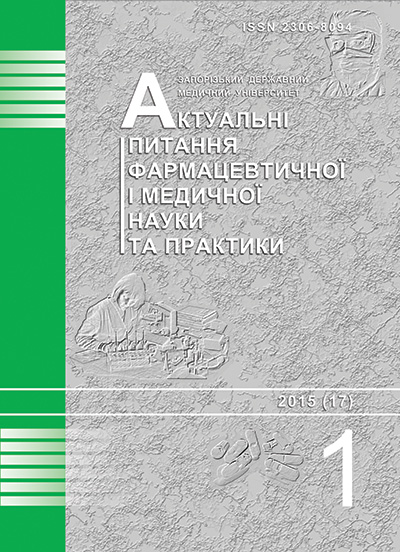The amino acid composition of Polygonum hydropiper L. and Polygonum persicaria L. herbs of Ukrainian flora
DOI:
https://doi.org/10.14739/2409-2932.2015.1.41637Keywords:
Chromatography, High Preserve Liquid, Polygonaceae, Amino Acids, Plants, MedicinalAbstract
Amino acids belong to the primary synthesis substances that are found in above-ground and underground organs of almost all flowering plants, are synthesized from simple inorganic compounds and are involved in the synthesis of proteins, coenzymes, flavonoids, steroidal compounds, polyphenols, complex carbohydrates, fats, vitamins and pigments. They are present in plants in easily digestible complexes and biologically available concentrations for a human body, and therefore have higher physiological activity comparing with synthetic analogues. Plant amino acids play an important role in the functioning of various systems and organs of the human body and are characterized by distinct pharmacological properties, as well as contribute to more rapid absorption and potentiate the effect of other biologically active compounds present in plants. Thisdetermines the relevance of selecting most valuable species of plants that contain amino acids complex.
The aim of research is to study the qualitative composition and quantitative content of free and bound amino acids in the protein in Polygonum hydropiper L. and Polygonum persicaria L. herbs of Ukrainian flora.
Materials and methods. Polygonum hydropiper L. and Polygonum persicaria L. herbs were collected in the summer during the phase of mass flowering (July - August 2013),VolodymyrivkaVillage, Zaporozhye Region. To confirm the qualitative composition and to detect the quantitative content of free and bound amino an acid in protein a methodology proposed by Stein and Moore, has been used; a high-performance liquid chromatograph, Model AAA 881 (Czech Republic) has been used.
Results. In conducting the research the content of free and bound 15 amino acids, of which 9 are essentialhas been established. Qualitative composition of the substances in both studied species was fully identified. During the experiment the content of the total amount of free and bound amino acids was established. In Polygonum hydropiper L. herb the concentration of free and bound amino acids was established to be a little higher than in Polygonum persicaria L. herb, respectively: 1,75 ± 0,16% and 8,88 ± 0,8% versus 1,09 ± 0, 1% and 6,49 ± 0,6%. In both studied objects the dominant amino acids are: alanine, tsystin, arginine (nonessential amino acids), leucine, lysine, isoleucine (essential amino acids).
Conclusion.
- The qualitative composition and quantitative content of free and bound amino acids in the protein in Polygonum hydropiper L. and Polygonum persicaria L. herbs of Ukrainian flora have been researched for the first time.
- There has been established 15 amino acids, 9 of which are essential.
- The concentration of amino acids in the herbs of the selected objects has been studied and it has been established that Polygonum hydropiper L. has a little higher concentration of free and bound amino acids than Polygonum persicaria L., respectively: 1,75 ± 0,16% and 8,88 ± 0.8% versus 1,09 ± 0,1% and 6,49 ± 0,6%.
- It was found that the dominant amino acids in overground Polygonum hydropiper L. and Polygonum persicaria L. plant material are: alanine, arginine, cystine, leucine, lysine and isoleucine.
- The received results testify the promising use of the plant material and will be considered in the future work for the more in-depth study of the selected objects as a source of natural bioactive substances.
References
Hontova, T. (2012). Aminokyslotnyi sklad gustyrh ekstraktiv z travy ta koreniv zhyvokostu shortskogo [Amino acid composition of thick extracts from herbs and roots of comfrey rough]. Aktualni pytannia farmatsevtychnoi i medychnoi nauky ta praktyky, 12(2), 4–5. [in Ukrainian].
Yerenko, O., Mazulin, O., Lohvin, P. & Mazulin, H. (2012). Aminokyslotnyi sklad roslynnoi syrovyny omanu brytanskogo u vegetatsiinyi period [Amino acid composition of plant material mislead the British in the growing season]. Aktualni pytannia farmatsevtychnoi i medychnoi nauky ta praktyky, 9(2), 10–12. [in Ukrainian].
Isiuk, M., Benzel, I. & Benzel, L. (2012). Doslidzhennia aminokyslotnogo skladu herani sybirskoi [Research amino acid composition of the Siberian geranium]. Aktualni pytannia farmatsevtychnoi i medychnoi nauky ta praktyky, 10(3), 4–6. [in Ukrainian].
Lutsenko, Yu. O., Darmohrai, R. Ye. & Simonov, M. R. (2010). Doslidzhennia aminokyslotnogo skladu lystia pliushcha zvychainogo. Zaporozhskij medicinskij zhurnal, 12(3), 110–112. [in Ukrainian].
Odintsova, V. M., Mazulіn, O. V. & Denysenko, O. M. (2008). Aminokyslotnyi sklad deiakykh vydiv rodu hirchak flory Ukrainy [Amino acid composition of some species of flora bitterling Ukraine]. Farmatsevtychnyi zhurnal, 5, 111–114. [in Ukrainian].
Odintsova, V. M., Mazulіn, O. V. & Denysenko, O. M. (2006). Aminokyslotnyi vmist u travi hirchaka ptashynogo, nepomitnogo, riznolystogo flory Ukrainy [Amino acid content in grass Gorchakov bird unnoticeably riznolystoho flora of Ukraine in the growing season]. Aktualni pytannia farmatsevtychnoi i medychnoi nauky ta praktyky, 1(15), 119–121. [in Ukrainian].
Smojlovskaya, G. P., Mazulin, A. V. & Grechannaya, E. V. (2008). Soderzhanie aminokislot v vidakh roda Achillea L. flory Ukrainy. Zaporozhskij medicinskij zhurnal, 2(47), 135–136.
Simonyan, A. V., Salamatov, A. A., Pokrovskaya, Yu. S., & Avanesian, A. A. (2007) Ispol'zovanie ningidrinovoj reakcii dlya kolichestvennogo opredeleniya b-aminokislot v razlichnyh ob``ektakh [Using the quantitative ninhydrin reaction to determine б-amino acids in the various objects]. Volgograd. [in Russian].
Downloads
How to Cite
Issue
Section
License
Authors who publish with this journal retain copyright and grant the journal right of first publication with the work simultaneously licensed under a Creative Commons Attribution License that allows others to share the work with an acknowledgement of the work's authorship and initial publication in this journal.


